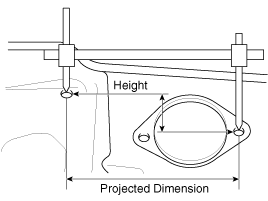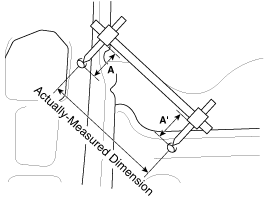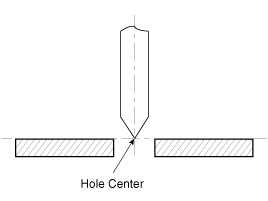| 1. |
Basically, all measurements in this manual are
taken with a tracking gauge. |
| 2. |
When a measuring tape is used, check to be
sure there is no elongation, twisting or
bending. |
| 3. |
For measuring dimensions, both projected
dimension and actual-measurement dimension are used in this
manual. |
| 1. |
These are the dimensions measured when the
measurement points are projected into the reference plane, and are
the reference dimensions used for body
alterations. |
| 2. |
If the length of the tracking gauge probes is
adjustable, make the measurement by lengthening one probe by the
amount equivalent to the difference in height of the two
surfaces.

|
| Actual-Measurement
Dimensions |
| 1. |
These dimensions indicate the actual linear
distance between measurement points, and are the reference
dimensions for use if a tracking gauge is used for
measurement. |
| 2. |
Measure by first adjusting both probes to the
same length (A=A').
|
Check the probes and gauge itself to
make sure there is no free
play. |

|
| 1. |
Measurements should be taken at the hole
center.

| |